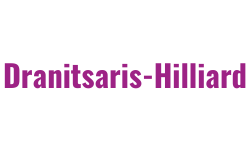Creating chaos, disorder, and dysfunction at work
Does your boss suffer from the Peter Pan Syndrome? If you’ve never heard of it, think of all the qualities of Peter Pan. Doesn’t take responsibility; not there when you need them; wants to have fun; doesn’t take issues seriously. Oh, now you’re nodding your head yes. This Syndrome is on the rise because of and thanks to all the helicopter parents who raised their kids to believe that they would never have to grow up and be responsible or do the hard stuff. They were always there to rescue them. Now these kids are leaders. Yikes.
The Peter Pan Syndrome is a book that was written in 1983 to show a prevalent syndrome in men having difficulty dealing with adult responsibility. While this theory addressed the struggle in men, many of us struggle with this challenge regardless of our sex or gender. As human psychological development is non-linear and complex, most of us get older without maturing. We stay in the comfort of codependent relationships, trading a piece of ourselves so that our partner will, in some fashion, let us live around our undeveloped parts. These days, the Peter Pan Syndrome has made a comeback in the attitudes and behaviors of all humans whether employees or leaders. When a leader is a Peter Panner, it does the most damage in organizations by way of creating organizational dysfunction.
The Peter Pan Syndrome is consistent with those suffering from symptoms of a dependency personality organization. It is characterized by behaviors of adolescence, rejecting adult responsibilities and a commitment to seeking pleasurable activities. While the original theory focuses on men not wanting to work, when it presents itself in leaders of an organization (in particular, an entrepreneurial organization), it can be distilled down to wanting to do only the things they “feel like doing.” Driven by the need to innovate and do things in a non-bureaucratic fashion, they ignore the needs of the business and employees by refusing to take responsibility or ownership for either.
In traditional organizations, those who suffer from the Peter Pan Syndrome are vulnerable when their role as a leader or manager calls on them to be responsible for their employees’ success, or when they have to make sure expectations are given to align behavior behind organizational goals. They are permissive and give employees tremendous freedom to do things as they see fit, bestowing freedoms they want for themselves, regardless of the needs of employees. They don’t want to do anything that doesn’t allow them the freedom to do things the way they want.
Symptoms of the Peter Pan Syndrome In Leaders
These leaders tend to be exciting to work for because they make work fun. They bring energy to situations and draw people to them with their enthusiasm and can-do attitude. Open-minded and tolerant, they are driven by their ambition and need for the freedom to do things their own way. While they do best as sole practitioners or entrepreneurs, they also do well in organizations that are fast paced with opportunities to march to the beat of their own drum. While they make things happen for themselves and the people around them, following their impulses and insisting there is no need for systems or hierarchy, Peter Pan leaders get in the way of their own success while making life challenging for the employees who try to follow them.
The following are some of the symptoms of the Peter Pan Syndrome that lead to organizational dysfunction.
Impulsive Decision Making
Like their child counterpart, Peter Pan leaders lack impulse control and the ability to manage frustration. They are not attuned to the emotional and physical cues that let them know when they may be in distress or overextended. Whatever impulse they have gets translated into acting out and indulging whatever the whim may be. No sooner have they decided on a direction, they quickly change course when something more appealing shows itself. These leaders disrupt order and stability, especially when they make change for the sake of change to simply alleviate feelings of boredom or complacency. They don’t recognize the impact this has on employees who are often left without certainty and begin to resent work done toward one goal, only to have their boss change direction.
Now You See them, Now You Don’t
Peter Pan leaders want employees who are as fast paced as they are, who can keep up with their thinking and activity level. Should they not be able to, or if they find that working with the team slows them down, they will disappear, becoming unavailable to employees while pursuing their own goals or more interesting activities. In fact, they are known to “drop out” without communicating to anyone that they are doing this. Peter Pan leaders can also withdraw and become unavailable to their staff by hiding out in their office with the door closed or make excuses to be out of the office in order to avoid negativity or responsibilities they don’t want to deal with. Their employees don’t know how to react to this sudden change in them.
Generate Options, Not Plans
Peter Pan leaders frustrate others by failing to plan and keeping options open. While this might be exciting and challenging for direct reports at the onset of working with them, direct reports can tire of this mode of action, especially if their hard work has not led to the kind of result they expected. This can ultimately lead to low morale and divisiveness among the staff. Since making a commitment to one plan excludes all other options, Peter Pan leaders hold out on making decisions for so long that others lose respect for their leadership. Their last-minute decisions and keeping options open may be exciting for them but can be very stressful for those around them who need a firm plan. Their need for spontaneous action can also exhaust others who prefer a more stable and constant approach.
Don’t Take Care of their People
Because Peter Panners are focused on meeting their own needs in pursuit of their own pleasure, they are not inclined to make plans and prefer to have the freedom to do whatever is most compelling to them. These leaders can struggle to connect with their team in a meaningful way, often leaving employees feeling like pawns in Peter Pan’s game of success, useful one minute, then unnecessary the next. They do not invest in relationship development or attend to the developmental needs of their employees because they don’t believe they are responsible for anyone but themselves. They can also fail to give others experiential opportunities through delegation especially if it’s a task that they enjoy.
Ignore Issues
Peter Pan leaders deny the existence of issues or problems acting like nothing is a big deal. When they find something challenging, they switch to something easier, rationalizing that it was a better idea anyway. They don’t deal with performance issues, giving people many chances to prove themselves, or alternately, to let them down. Instead of confronting the situation, they try to compensate for people’s inadequacies or avoid dealing with them altogether. These leaders prefer to avoid problems as they naturally avoid any situation that does not generate pleasurable feelings. They fail to think about the impact that avoiding conflict has on their employees and their moral. When confronted with a situation involving conflict, they may use diversionary tactics such as changing the subject or remembering something they have to do right away or pretending to agree with what they are being asked to do, while having no intention of following through.
What to do?
Permissive leadership has many ways of presenting itself as it is a result of a developmental gap in the person leading. Peter Pan is only one of the many collections of behavior that cause organizational dysfunction and needs to be approached as a systemic issue, not just focusing on the behavior of the leader. As with all dysfunctions, there needs to be clarity of goals, expectations and supportive systems to align behavior behind.
If you are an entrepreneur or leader who is struggling with their own resistance to embracing responsibility, you are not alone. Everyone struggles to step out of their comfort zone. Realizing that you have come as far as possible with your business or in your organization, the change must happen inside of you. The Peter Pan Syndrome becomes a trap with you doomed to repeating the same self-limiting pattern. You must stop seeing the issue as something outside of you and that it is one of your own creating.
If you work for a Peter Pan leader, you need to develop managing up skills. Using the metaphor of a ship, while the captain may be commanding the course, you can be in the wheelhouse or at the rudder, steering from behind the scenes. Learning to say no to impulsive decisions, building a business case to stay the course and championing the needs of the business are all ways to strengthen the foundation without overtly opposing. Remember, staying is a choice as is leaving. Watch for feelings of powerlessness and the victim consciousness that emerge as a result of their behavior and shift to what you can do to keep the ship on course.
___________________________________________________________________________________________________
Anne and Heather are organizational and leadership development experts at Caliber Leadership Systems, a boutique consulting firm specializing in dismantling of dysfunction in organizations. They are dedicated to empowering individuals, leaders, and organizations to achieve their potential by leveraging their expertise in the neurobiology of human development combined with system thinking approach. They wear many hats – Consultants, Executive Coaches, Trainers, Speakers and Authors – adapting their expertise and solutions to meet the needs of their clients. They bring a unique depth and breadth of knowledge and experience that gives clients the benefit of all of our disciplines to help them achieve their goals.
As experts in human development and behavioral change, leadership and organizational transformation, interpersonal dynamics and the achievement of potential, Anne and Heather have worked with thousands of leaders and individuals from around the world, been featured in dozens of publications, spoken at professional conferences, and written several series of books on personality type and the brain based on the Striving Styles® and Myers-Briggs Type Indicator®.
Follow us on LinkedIn to watch our workshops live!
Also, you can watch anytime on our YouTube Channel: Dranitsaris-Hilliard!


Recent Comments